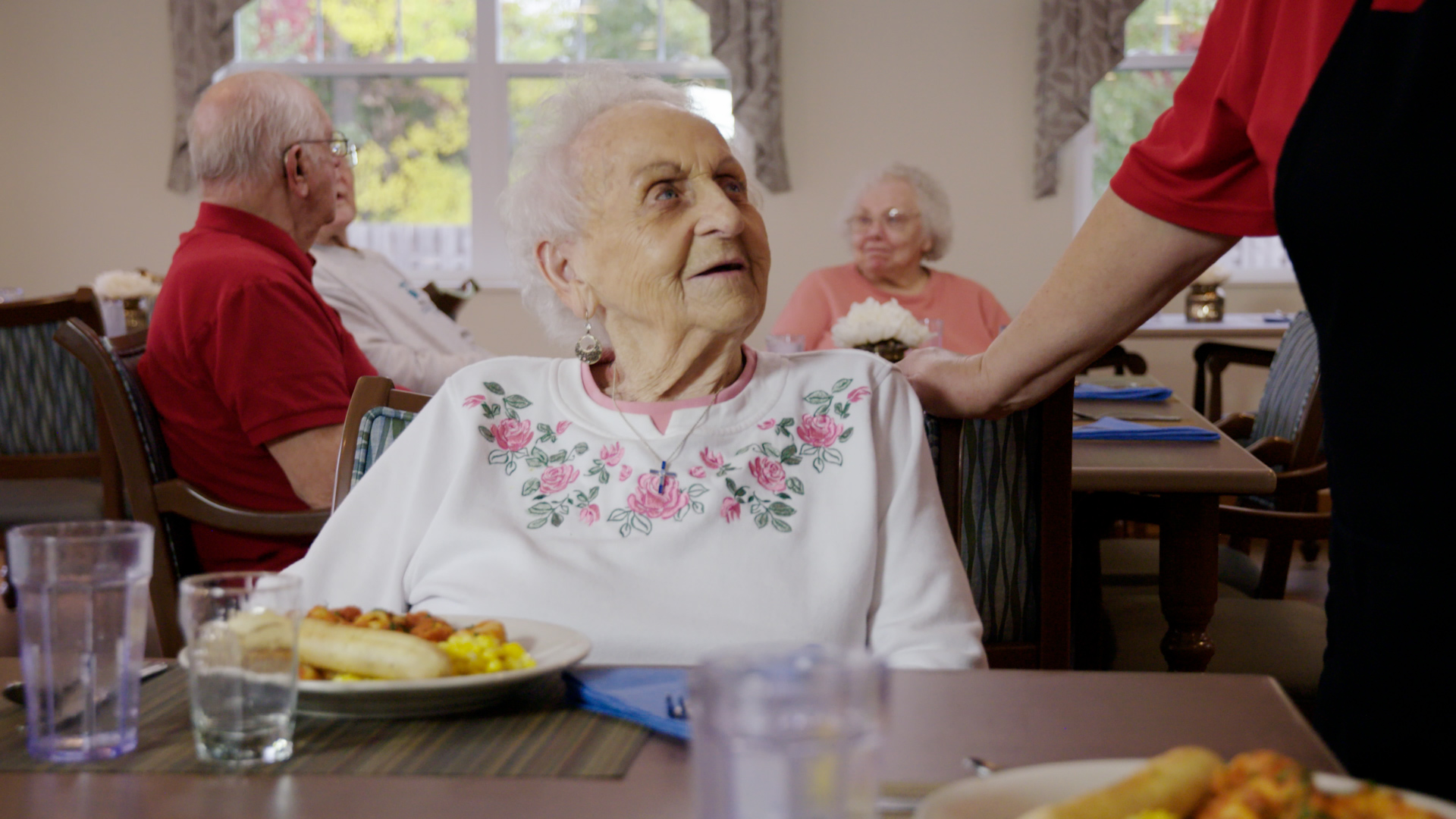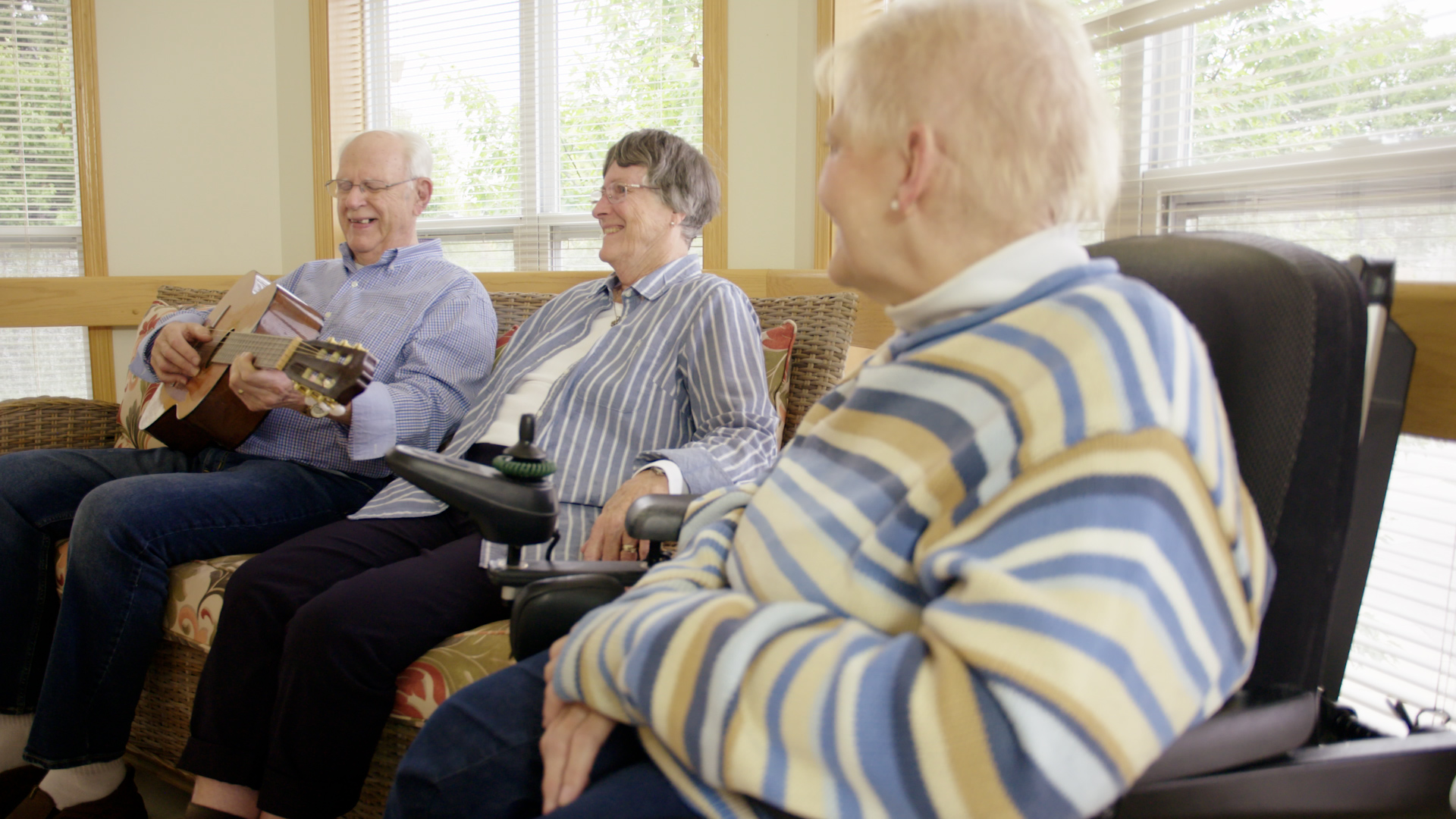News
Caring to Notice Part 1

Have you ever noticed that something is different when talking to or visiting an elderly friend or loved one? Maybe it is something that you can’t quite put your finger on. You might have worried about their safety or their ability to care for themselves. You may be asking yourself – How can you help? What can you do?
Debbie Waldron-Smith, a Sales Director at Oak Park Place Burlington, has over thirty years’ experience in elderly services and the senior living industry. She has shared with us, in this two-part series, some of the many ways to assess the functioning, safety, and independence of seniors.
Orientation
Perhaps the senior is confused about what day it is or what time it is. In a friendly, non-confrontational way, ask them. Note how they answer and what tools they use to verify time and date. Do they pick up the newspaper and look at the date underneath the headline? Do they refer to a clock in their kitchen with hands pointing to the time? Can they interpret the meaning of the hands on the clock? Correct orientation to day and time is one of the most significant safety requirements for independence. We use date and time to dispense our medications, keep a calendar, etc.
When a senior begins experiencing issues or concerns with memory, the senior may temporarily become disoriented. Classic questions in their doctor’s office or on a memory test are “What time is it? What is the date?”. There is even a memory test called the clock test. Research has found those with memory impairment have difficulty drawing a clock, setting the hands, and processing the steps needed to execute this task.
In response to challenges with day and time, you can offer handy solutions. Some seniors may not be able to decipher the correct time from hands on the clock. Try using a digital clock that simply displays the time. Some even display the date and day of the week. Alternatively, there are talking watches that can be great tools for someone with memory changes. Some verbally tell the time at intervals throughout the day. A very simple tool for day of the week is to display the calendar on the wall and have them cross out each day with a black “x.” There are several ways you can help to reduce anxiety about orientation to date and time.
Summoning Emergency Help
A second skill to assess is the senior’s ability to dial 911 and being able to recite their address to the responder. Truly, this ability is fundamental to being able to live safely at home. As a geriatric social worker, it was one of the “deal-breaker” questions I kept in the front of my mind when determining in-home living appropriateness.
Ask the senior what phone number they would dial in an emergency. It is a simple and objective question to get to the heart of their response. Then, ensure that they know how to dial the number on their phone. By using a very caring and curious approach your questions won’t seem obtrusive. If they seem to object to the questioning tell them your own emergency plans.
Next, ask them to tell you how they would give someone directions to get to their home. This is important to their orientation to place. Again, it is a key variable tested by psychologists, neurologists, and physicians. Their ability to answer this question will help them in the event they get lost.



